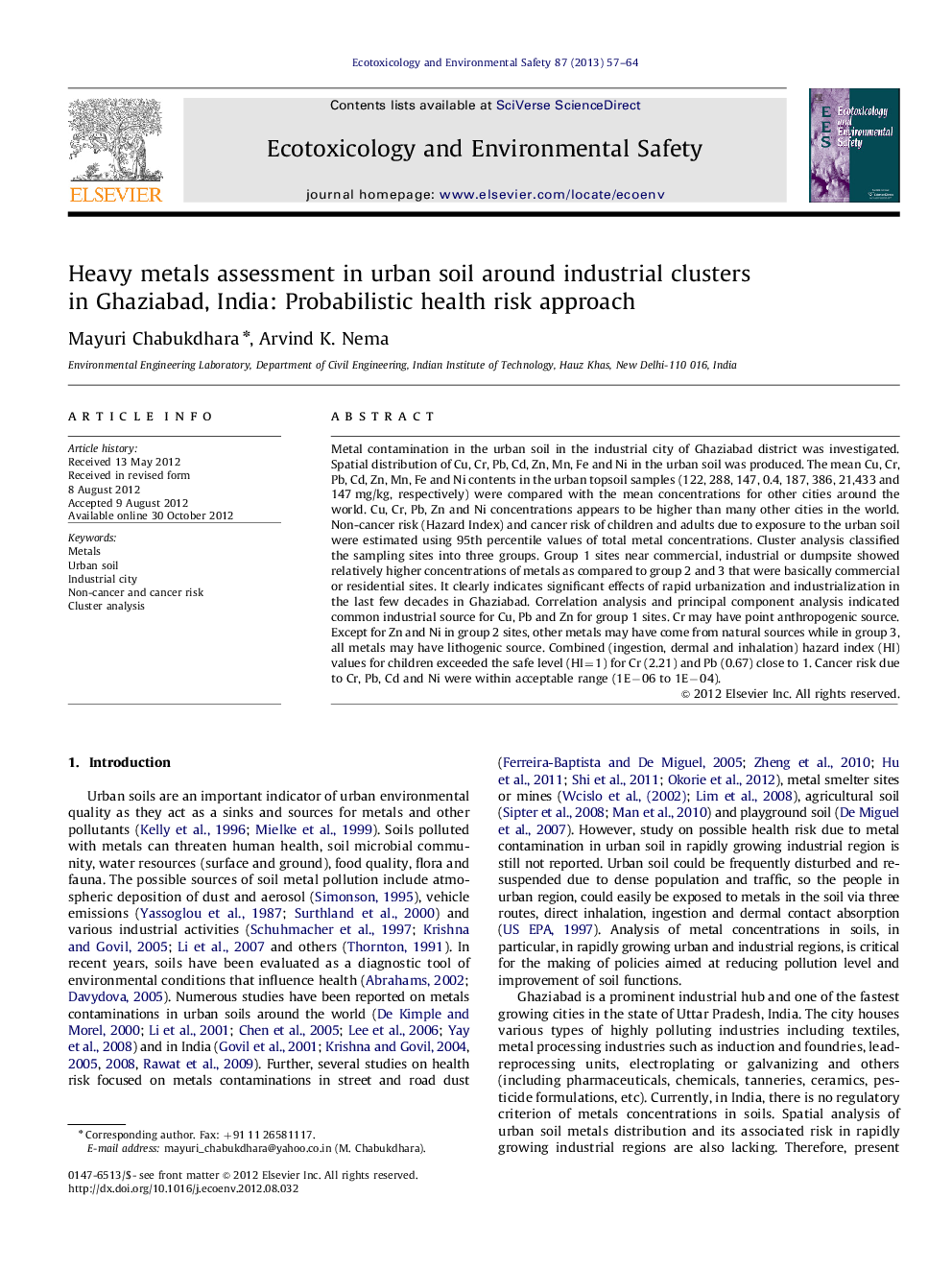| کد مقاله | کد نشریه | سال انتشار | مقاله انگلیسی | نسخه تمام متن |
|---|---|---|---|---|
| 4420620 | 1618976 | 2013 | 8 صفحه PDF | دانلود رایگان |

Metal contamination in the urban soil in the industrial city of Ghaziabad district was investigated. Spatial distribution of Cu, Cr, Pb, Cd, Zn, Mn, Fe and Ni in the urban soil was produced. The mean Cu, Cr, Pb, Cd, Zn, Mn, Fe and Ni contents in the urban topsoil samples (122, 288, 147, 0.4, 187, 386, 21,433 and 147 mg/kg, respectively) were compared with the mean concentrations for other cities around the world. Cu, Cr, Pb, Zn and Ni concentrations appears to be higher than many other cities in the world. Non-cancer risk (Hazard Index) and cancer risk of children and adults due to exposure to the urban soil were estimated using 95th percentile values of total metal concentrations. Cluster analysis classified the sampling sites into three groups. Group 1 sites near commercial, industrial or dumpsite showed relatively higher concentrations of metals as compared to group 2 and 3 that were basically commercial or residential sites. It clearly indicates significant effects of rapid urbanization and industrialization in the last few decades in Ghaziabad. Correlation analysis and principal component analysis indicated common industrial source for Cu, Pb and Zn for group 1 sites. Cr may have point anthropogenic source. Except for Zn and Ni in group 2 sites, other metals may have come from natural sources while in group 3, all metals may have lithogenic source. Combined (ingestion, dermal and inhalation) hazard index (HI) values for children exceeded the safe level (HI=1) for Cr (2.21) and Pb (0.67) close to 1. Cancer risk due to Cr, Pb, Cd and Ni were within acceptable range (1E−06 to 1E−04).
► Cluster analysis classified sampling sites into 3 groups, group 1 is most polluted.
► Cu, Cr, Pb, Zn and Ni concentrations were higher than many other cities in the world.
► Cu, Pb and Zn mainly originate from industrial and traffic sources in group 1 sites.
► Hazard index exceeded the safe level (=1) for Cr (2.2) and close to 1 for Pb (0.67).
► Cancer risks for Cr, Pb, Cd and Ni are in the acceptable range (1E−06 to 1E−04).
Journal: Ecotoxicology and Environmental Safety - Volume 87, 1 January 2013, Pages 57–64